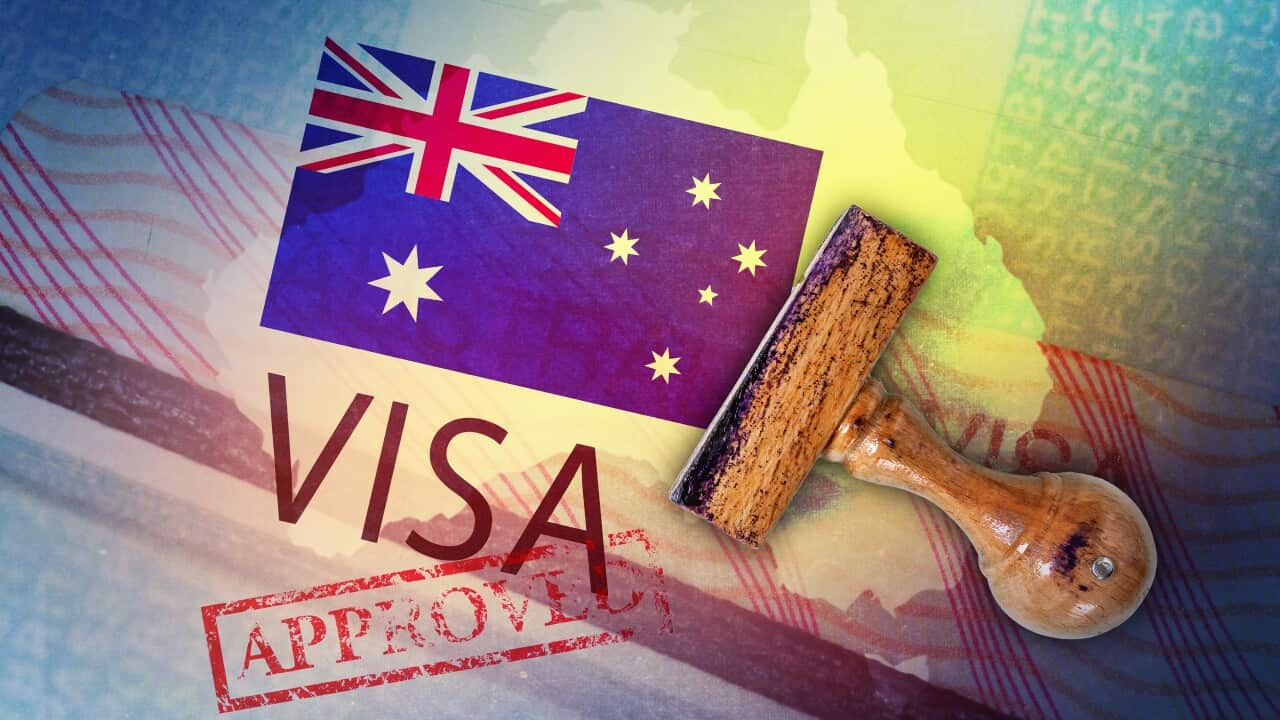Key Points
- The Department of Home Affairs estimates there are 75,400 unlawful non-citizens in Australia.
- There are around 980 people held in immigration detention facilities, 200 of them are overstayers.
- A total of 86,929 individuals had not been granted a Protection Visa and had not yet been deported at the end of the period.
Alex* was preparing for his shift at a Chinese restaurant in October when officers from the Department of Home Affairs and the Australian Border Force (ABF) entered the premises.
It was during this visa compliance check that authorities discovered that Alex had overstayed his Australian visa by seven months.
He was detained and transported to the Villawood Immigration Detention Centre.
"They came in through the front and back doors simultaneously, leaving me nowhere to run," Alex told SBS Chinese.
He arrived in Australia on a tourist visa in 2019 and later 'hopped' onto a student visa — a process common among individuals intending to secure a visa to extend their stays in Australia for work purposes.
In 2023, he applied for a protection visa — a pathway usually reserved for individuals who face persecution if they return to their country of origin — to due to its low cost and sometimes years of processing time.
Alex’s application for protection was rejected in March.
He was "taking a chance" by overstaying his visa, thinking he would not be "caught".
"But unfortunately, when you don't believe it, it tends to hit you head-on," he said.
Alex is one of at least 200 'overstayers' currently in immigration detention, which is around 20 per cent of the total number within this system (984).
The Department of Home Affairs estimates that 75,400 individuals were unlawfully present in Australia as of 30 June, excluding people in detention, an increase of 5,500 over the previous year.

'Hopelessly inadequate'
The government was able to locate a "very small" number of overstayers compared to the actual number, according to Abul Rizvi, the former deputy secretary of the Department of Immigration.
The available resources for the government to identify and monitor overstayers "are hopelessly inadequate to deal with the challenge," he added.
"The government has made some efforts … but it's a long way from addressing the problem."
Home Affairs data suggests that as of September, a total of 86,929 individuals had not been granted a Protection Visa and had not yet been deported.
To address visa misuse and overstaying, the government conducts immigration compliance checks targeting workplaces known to employ undocumented workers.
"Mostly the compliance visits target places like big factories, farms during harvest season ... it is likely they'll probably find some people in those groups who have overstayed," Rizvi said.
Meanwhile, a Visa Cessation Reminder message is sent prior to the visa expiry date for holders of certain temporary visa subclasses, encouraging them to take action to maintain lawful status.
In addition, employers are urged to check the work rights of prospective employees by using Home Affairs’ system to ensure they do not inadvertently allow illegal work.
Employing, referring, coercing or contracting a non-citizen who doesn't have the right to work in Australia remains a criminal offence and employers face penalties for allowing illegal work.
Another method that the government had taken recently was to "significantly increase" the resources for processing asylum caseload, which allowed applications to be processed quickly enough to create a disincentive to use the asylum system, Rizvi added.
Despite these efforts, the number of people in the asylum system in Australia increases every month, Rizva said, adding that the caseload sits at around 118,000 and is "going up".

Abul Rizvi said that the government's "hopelessly inadequate" resources meant authorities were a "long way" from addressing the problem of overstaying. Source: Supplied
But under Australian migration law, overstayers are subject to detention and most will be deported.
Melbourne migration lawyer Sean Dong said that the length of detention before deportation varied from case to case, from a few weeks to more than 10 years.
The average period for people held in detention facilities was 513 days.
Dong said the most common reason for overstaying was to make "quick money" in Australia before returning to home countries.
"Many overstayers are motivated by the prospect of higher wages and cash-in-hand opportunities [in Australia], which they hope will improve their living conditions back home," he said.

Melbourne migration lawyer Sean Dong says the main reason overstayers are willing to risk staying and working in Australia is to make money.
"If you want to come to Australia to make money, do it legally. Overstaying puts you on edge every day," he said.
Immigration officers are generally sceptical of your appeal reasons once you’re in detention.Alex*, detained for overstaying his visa
The Department of Home Affairs urged non-citizens who did not hold a visa and had no lawful basis for remaining, to leave Australia as soon as possible.
"An unlawful non-citizen may be granted a Bridging Visa E to allow them to remain in Australia lawfully while they make arrangements to depart," a department spokesperson told SBS Chinese.
"People who cannot afford to depart Australia voluntarily may be entitled to return and reintegration assistance."
*Name changed for privacy reasons.













